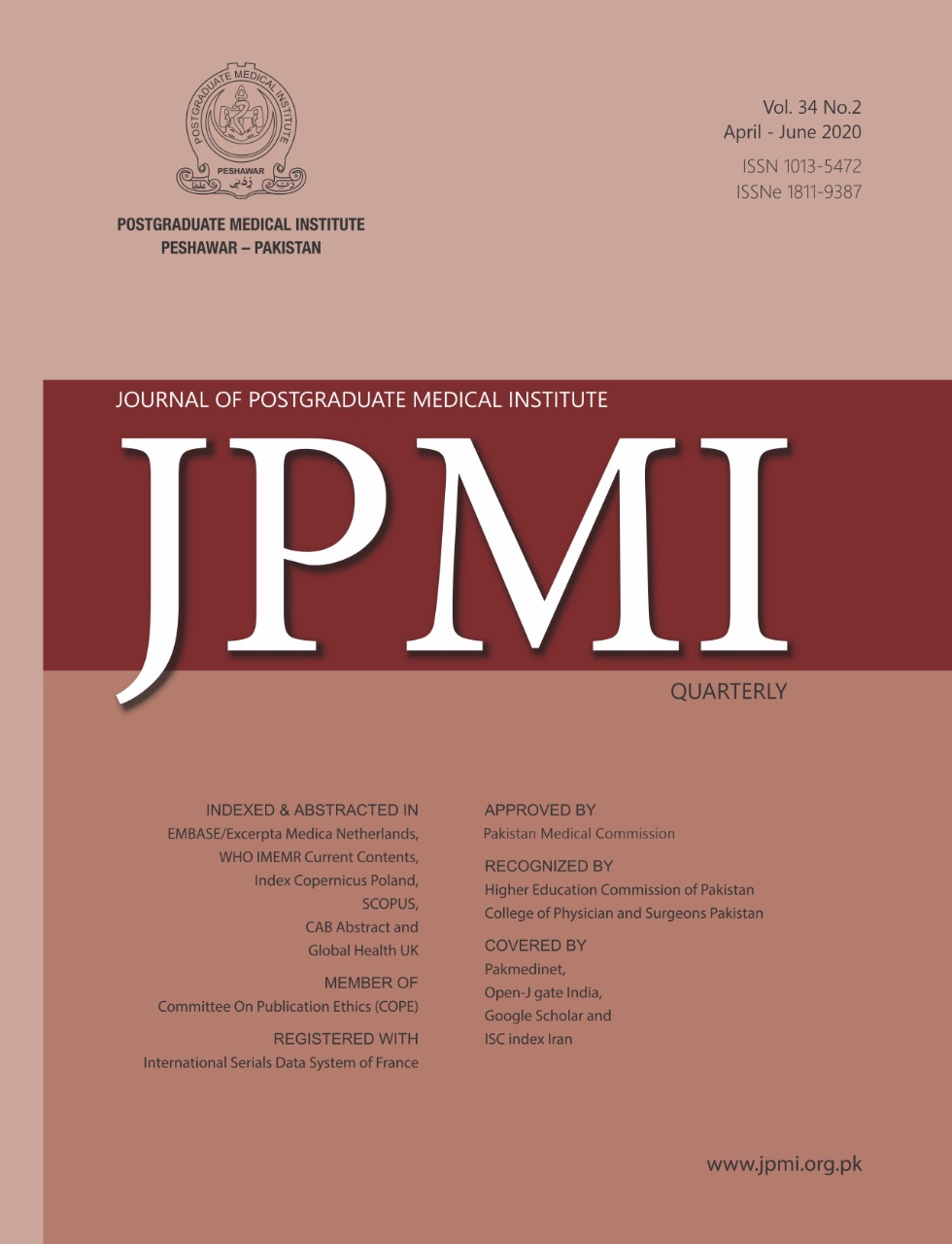LENGTH OF UMBILICAL CORD AND PERINATAL OUTCOME
Main Article Content
Abstract
Objective: To find out association between umbilical cord length and perinatal outcome. Methodology: This cross sectional study was conducted on 3,300 women with singleton live fetus of 37-42 weeks of gestation, in spontaneous labour, admitted in Obstetrics and Gynaecology department of Lady Reading Hospital (LRH) Peshawar. Convenient sampling technique was used. Women with multiple pregnancy, preterm labour, induced labour and fetus with congenital anomalies were excluded. Length of umbilical cord was measured with flexible measuring tape. After delivery Apgar score of baby was noted at 1 and 5 minutes. Number of stillbirths, neonatal intensive care unit (NICU) admission and early neonatal deaths were noted to calculate perinatal outcome. Data analysis was done using SPSS version 22. Results: The cord length varied from 40 -100 cm. Maximum cases had cord length between 51–60 cm (53.45 %). Both short and long cords were associated with increased incidence of fetal distress. Changes in fetal heart rate were 48 % in short cord group and 47 % in long cord group (p<0.001). Number of still births was high in short (11.29%) and long cord group (12.57%). Birth asphyxia with low Apgar score was significantly high in short (30.64%) and long cords (23.89%) compared to cords with normal length (p < 0.001). Conclusion: Extremes of cord lengths are associated with fetal heart rate abnormalities, birth asphyxia and poor perinatal outcome.
Article Details
Work published in JPMI is licensed under a
Creative Commons Attribution-NonCommercial 2.0 Generic License.
Authors are permitted and encouraged to post their work online (e.g., in institutional repositories or on their website) prior to and during the submission process, as it can lead to productive exchanges, as well as earlier and greater citation of published work.


